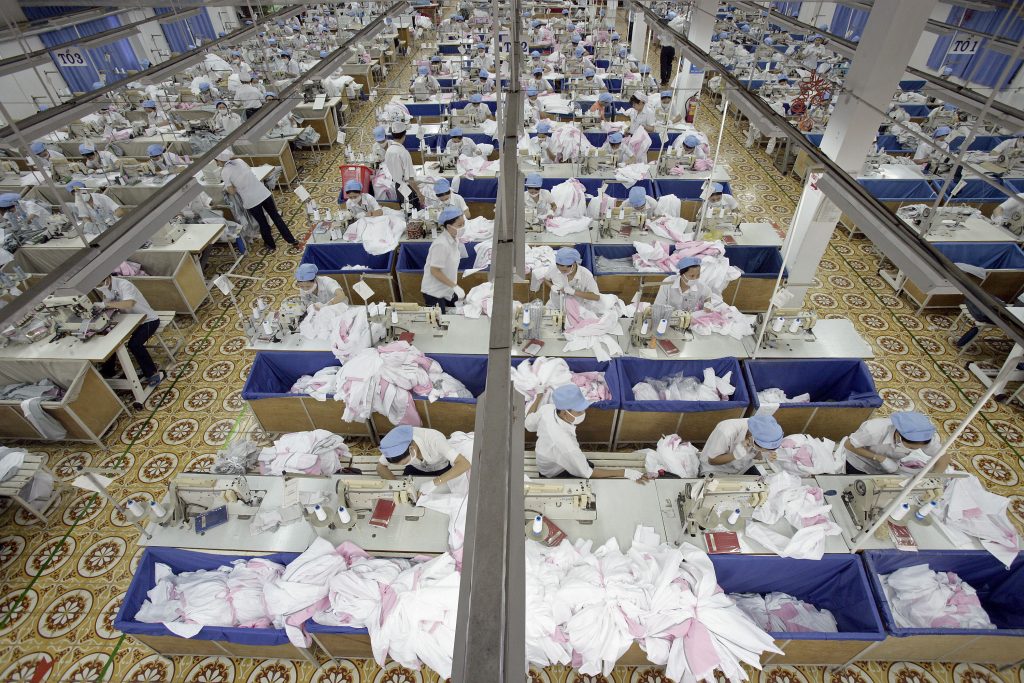The future of clothing does not lag behind
Bloomberg View has two textile-infatuated columnists. One of them is located in Kuala Lumpur and is writing a book on second-hand goods, including global trade in used clothes.
Another headquartered in Los Angeles is also writing a book on textiles, technology and trade. So, we asked them if they wanted to discuss how they saw the global trend in the coming years. This is what they said.
Adam Minter: Many years ago, I visited a Chinese factory where hundreds of workers used sandpaper and razors to scratch jeans for American costume manufacturer brands. As you mentioned, Levi Strauss is now replacing the production of distressed jeans with lasers and automation.
If automation is expected to shift large-scale production to high-paying countries, what role will developing countries play in textiles and clothing in the coming decades?
Virginia Post: Textile and garment manufacturing no longer provide a sound road to industrialization in poor countries.
This is one reason why the economist Danny Roderick was worried about “premature non-industrialization.” He called it “many (if not most) developing countries,” especially in Latin America and Africa, “becoming a service economy.” Body without proper industrial experience.”
Adam Minter: Fashion is destined to become a hyper-localized industry, just like before the Industrial Revolution?
The Virginia Post: In the short term, the greater challenge faced by apparel manufacturers is that people in developed countries, especially Americans, seem to have lost interest in buying new clothes.
What do you see in the books dealing with second-hand clothing transactions?
Adam Minter: No. In developing countries, Emerging Markets (EM) consumers buy more clothes than ever before – especially old clothes. However, this demand is not just a cheap price for used clothing. This is about quality. In Ghana, I spent a lot of time in the past two years. Imported second-hand clothes are usually more expensive than new clothes. If you visit the second hand clothing market in Ghana, you will find that there are few fast fashion brands. Second-hand garment exporters are looking for durable garments and they strive to maintain a low-quality, fast-fashion shipping container.
The Virginia Post: “The death of clothes” is definitely the first world phenomenon, and it is probably a phenomenon in North America. In addition to pure fulfillment, because our closet is full, we would rather spend money on food or travel. I suspect that emphasis on casual comfort will only make new clothes boring. They no longer provide change or special things.
Adam Minter: American consumers support the idea of falling apart after a quick two-time purchase (and then returning to H&M for more). For EM consumers, the lack of durability of fast fashion drives purchase decisions. Apparel manufacturers may accelerate the opening of large markets.
The Virginia Post: Equipment costs have fallen, so it may eventually challenge second-hand clothing in emerging economies. In particular, established manufacturers in places like Bangladesh and China are looking for markets closer to home. It may also reduce the supply of used clothing by providing more valuable clothing to consumers in rich countries.
Adam Minter: From the perspective of the secondary market, the Chinese issue is crucial. China stopped accepting second-hand clothing imports in the 1990s, partly because it encouraged domestic consumption to export a large amount of clothing.
Whether this ban has any difference is questionable (I think the key factor is the increase in income), but the number of new clothes China now consumes is not debatable.
By the end of the century, it will surpass the United States as the world’s largest apparel market – and most of the clothing will be fast fashion.
According to a recent estimate, from 2000 to 2015, the number of wearing Chinese clothes dropped by 70%.
China has become one of the world’s largest exporters of used clothing. In Africa, it is not uncommon to see a used clothing market filled with Chinese T-shirts.
The quality of products produced by Chinese costume manufacturer for the Chinese domestic market tends to be lower than the export market.
Virginia Postrel: China’s advantage lies in low wages, rather than advanced equipment and expertise. Of course, China also has a huge domestic market, as well as potential customers in the region. In these regions, the more automated and rapid turnaround advantage will be related to this.
Adam Mint: However, the number of Chinese garment waste is increasing at home and abroad. Many international apparel traders will not touch Chinese clothing.
